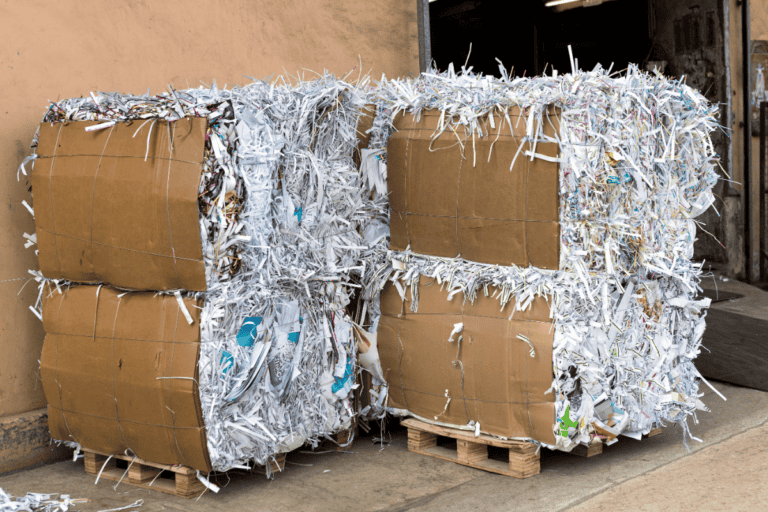Networking for a Cause: Building Relationships in the Sustainability Sector
Networking with sustainability leaders and organizations is crucial for anyone looking to make a difference in the field of environmental and social responsibility. Building relationships within the sustainability sector can provide valuable insights, opportunities, and connections that can propel your sustainability goals forward. In this article, we will explore effective strategies to build your sustainability network, from identifying clear goals to connecting both online and offline. Let’s dive in!
Key Takeaways:
- Setting clear goals is essential for successful networking in the sustainability sector.
- Researching potential contacts helps you identify common ground and offer value in your interactions.
- Connecting both online (through platforms like LinkedIn and Twitter) and offline (through attending events) is necessary for building strong relationships.
- Nurturing and showcasing your value to others is crucial in sustaining long-lasting relationships.
- Being authentic and genuine in your interactions attracts the right people and opportunities to further your sustainability journey.
Identify Your Goals
Before reaching out to potential contacts in the sustainability sector, it is essential to identify your goals for networking. Having clear objectives will help you focus your efforts and develop effective relationship-building strategies. Whether you want to learn more about a specific topic, find a mentor or job, raise awareness for a cause, or seek support and funding, defining your goals is the first step towards cultivating meaningful connections within the industry.
By establishing realistic and specific goals, you can tailor your communication strategy to target the right audience and maximize your networking opportunities. Whether you are a sustainability professional, an entrepreneur, or a passionate advocate, understanding your objectives will guide your interactions and enhance your chances of success.
Research Your Prospects
Once you have identified your goals in the sustainability sector, the next step is to conduct thorough research on sustainability leaders and organizations that align with your interests and objectives. This research will help you establish common ground, identify potential collaboration opportunities, and offer value when reaching out to them. Here are some effective strategies to guide your research:
- Explore Websites: Visit the websites of sustainability organizations to gather information about their background, mission, values, and initiatives. Look for any projects or initiatives that resonate with your goals, as this will be a good starting point for establishing a connection.
- Utilize Social Media Platforms: Follow sustainability leaders and organizations on social media platforms such as LinkedIn, Twitter, and Facebook. Pay attention to the content they share, their engagement with followers, and any conversations related to topics that align with your interests.
- Read Blogs and Publications: Stay updated with the latest news, trends, and insights in the sustainability sector by reading blogs and publications. This will not only expand your knowledge but also provide valuable information about key players and organizations making a difference in the industry.
- Attend Events and Webinars: Participate in sustainability-focused events and webinars to connect with industry experts and thought leaders. These platforms offer an opportunity to gain firsthand knowledge, learn about ongoing projects, and network with like-minded individuals who share a passion for sustainability.
By utilizing these research strategies, you can gain a comprehensive understanding of sustainability leaders and organizations in your field. This knowledge will enable you to establish meaningful connections, initiate collaborations, and contribute to sustainable network development.
Connect Online and Offline
Building relationships in the sustainability sector requires both online and offline connection. By utilizing various platforms and attending in-person events, you can expand your network and engage with like-minded individuals and organizations.
Online Connection
Online platforms provide valuable opportunities to connect with sustainability leaders and organizations. Here are some effective ways to connect online:
- Follow: Follow sustainability leaders and organizations on platforms such as LinkedIn, Twitter, and Instagram. Stay updated with their activities, achievements, and insights.
- Engage: Like, comment, and share their content to show your support and contribute to the conversation. This helps build visibility and credibility within the sustainability community.
- Message: Reach out to sustainability leaders and organizations through direct messaging to introduce yourself, express your interest, and initiate conversations. Be genuine in your interactions and highlight common interests or goals.
To further enhance your online presence and network, consider joining online communities, forums, and webinars related to sustainability. Actively participate in discussions, share your knowledge, and connect with others who share your passion for sustainability.
Offline Connection
While online interaction is convenient, offline connection provides a valuable opportunity to meet and interact face-to-face. Here are some ways to connect offline:
- Conferences: Attend sustainability conferences and expos to network with industry professionals, learn about key trends, and showcase your expertise.
- Workshops: Participate in workshops and training sessions to enhance your knowledge and skills while connecting with fellow sustainability enthusiasts.
- Networking sessions: Look out for networking events specifically designed for sustainability professionals. These sessions offer a relaxed and informal environment to build meaningful connections.
Mixing online and offline networking strategies will help you cultivate relationships in the sustainability sector and create a strong support system for your sustainability journey.
| Online Connection | Offline Connection |
|---|---|
| Follow sustainability leaders and organizations on platforms like LinkedIn, Twitter, and Instagram. | Attend sustainability conferences and expos. |
| Engage with their content by liking, commenting, and sharing. | Participate in workshops and training sessions. |
| Initiate conversations through direct messages. | Attend networking sessions. |
| Join online communities, forums, and webinars. |
Embrace the power of online and offline connections to build a strong network of sustainability professionals, create collaborative opportunities, and drive positive change.
Build Relationships
Networking is a long-term process of building relationships based on trust, respect, and mutual benefit. To effectively foster connections in sustainability, it is essential to follow relationship building strategies that will strengthen your network and create meaningful partnerships.
Follow Up Regularly
Once you have made initial contact with your network, it is important to follow up regularly to maintain and nurture these connections. Keep your contacts updated on your progress, whether it’s sharing a recent success or seeking advice on a challenge you’re facing. Regular communication shows your commitment and dedication to building a mutually beneficial relationship.
Provide Feedback and Offer Assistance
To foster strong connections in sustainability, it is crucial to provide feedback and offer assistance whenever possible. Share your expertise, provide valuable insights, and offer support to your contacts. By offering assistance, you showcase your willingness to contribute to their success and build trust within your network.
Seek Advice and Acknowledge Contributions
Building relationships in sustainability involves seeking advice from others who have expertise or experience in areas you want to explore. Be open to learning from your network and acknowledge their contributions to your growth. Recognize their expertise and the value they bring to the table, fostering a sense of collaboration and respect.
Expand Your Network
Building relationships in sustainability is not limited to your existing contacts. Actively seek out referrals and recommendations from your network to expand and diversify your connections. By leveraging the trust and credibility of your existing contacts, you can build new relationships with like-minded individuals and organizations in the sustainability sector.
Support, Endorse, and Promote Others
A strong network relies on reciprocity and mutual support. Ensure you support, endorse, and promote others in your network. Share their achievements and initiatives through your communication channels. By showcasing the success of others, you contribute to a collaborative and thriving sustainability community.
| Benefits of Building Relationships in Sustainability | Actions to Strengthen Connections |
|---|---|
| Access to valuable insights and opportunities | Regularly follow up with contacts |
| Collaborative partnerships for impactful projects | Provide feedback and offer assistance |
| Increased visibility and credibility in the sector | Seek advice and acknowledge contributions |
| Widening of professional networks for future collaborations | Expand your network through referrals and recommendations |
| Supportive and thriving sustainability community | Support, endorse, and promote others |
Showcase Your Value
When networking in the sustainability sector, it’s important to showcase the value you can bring to others. Demonstrate your skills, knowledge, experience, and passion for sustainability through creating and sharing relevant content, participating in projects and campaigns, and highlighting your abilities and impact. Effectively communicating your unique skills and problem-solving capabilities will position you for success.
By showcasing your value, you can attract the attention and interest of sustainability leaders, organizations, and potential partners, paving the way for sustainable partnerships and sustainable network development.
One way to showcase your value is through creating and sharing relevant content. This could be in the form of blog posts, articles, case studies, or social media updates that highlight your insights and expertise in the sustainability sector. By providing valuable information and thoughtful analysis, you establish yourself as a trusted resource and attract like-minded individuals and organizations.
Another strategy is to actively participate in projects and campaigns that align with your sustainable goals. Collaborating with others not only demonstrates your commitment to making a positive impact but also exposes you to a wider network of contacts. By working together to drive change, you build connections and credibility within the sustainability sector.
Lastly, make sure to highlight your abilities and impact when networking. Clearly communicate the outcomes and results of your previous sustainability initiatives, showcasing how your expertise and contributions have made a difference. Whether it’s reducing carbon emissions, implementing water conservation strategies, or promoting sustainable supply chains, emphasize the tangible benefits and positive outcomes that you have achieved.
Put Your Value on Display: A Case Study
An excellent example of showcasing value in the sustainability sector is the partnership between GreenTech Solutions and EcoForward. GreenTech Solutions is an innovative renewable energy company specializing in solar panel installations, while EcoForward is a nonprofit organization focused on promoting sustainable living practices.
GreenTech Solutions actively participates in local sustainability campaigns and events organized by EcoForward, such as beach cleanups, recycling drives, and energy conservation workshops. Through their involvement, they not only contribute to EcoForward’s mission but also proactively engage with individuals and organizations that share their sustainability goals.
GreenTech Solutions further showcases its value by creating and sharing educational content on their website and social media platforms. They provide tips and insights on adopting sustainable energy practices, debunk common myths about renewable energy, and highlight real-life success stories of their clients. By positioning themselves as thought leaders and experts in the field, they attract a broader audience interested in sustainability and renewable energy solutions.
This sustained effort to showcase their value has resulted in fruitful sustainable partnerships for GreenTech Solutions. They have secured collaborations with local government agencies, corporate sustainability programs, and community organizations, leading to an expanded network and increased business opportunities.
Embedding sustainable values and impact-driven capabilities into your networking approach not only sets you apart but also attracts like-minded individuals and organizations. By consistently showcasing your value through content creation, active participation, and highlighting your achievements, you position yourself as a valuable asset to the sustainability sector, nurturing sustainable partnerships and driving sustainable network development.
Be Yourself
Authenticity is key when cultivating relationships in the sustainability industry. To build genuine connections with sustainability leaders and organizations, it’s important to be honest, humble, and genuine in your interactions. Let your true personality shine through and express your motivations, values, and vision. Remember, networking is not just about exchanging information; it’s also about sharing stories, emotions, and aspirations.
By being yourself, you will attract the right people and opportunities that align with your sustainability journey. Showcasing your authentic self will help you connect with like-minded individuals who share your passion and values in driving sustainable change.
The Power of Authenticity
“Authenticity is the key factor in establishing lasting and meaningful relationships in the sustainability industry. When you are true to yourself and genuine in your interactions, others can see your passion and commitment. This creates trust and enhances the potential for collaboration and partnership in driving sustainability forward.”
– Sarah Thompson, Green Solutions Co.
Benefits of Being Authentic
- Attracting like-minded individuals and organizations
- Enhancing trust and credibility
- Fostering genuine connections and mutual support
- Building long-term relationships based on shared values
- Creating opportunities for collaboration and positive impact
When you are authentic in your networking efforts, you form connections with individuals and organizations who resonate with your values and mission. These meaningful relationships can lead to new collaborations, innovative solutions, and a collective effort towards a more sustainable future.
| Networking Tips for Authenticity | Benefits |
|---|---|
| 1. Share your personal sustainability journey | Establishes trust and relatability |
| 2. Be transparent about your strengths and weaknesses | Encourages openness and vulnerability |
| 3. Actively listen and show genuine interest in others | Builds rapport and fosters deeper connections |
| 4. Stay true to your values even in difficult situations | Increases credibility and integrity |
| 5. Use storytelling to convey your passion and purpose | Creates an emotional connection and inspires others |
Know Your Niche
When building a network of investors in the sustainability industry, it’s essential to understand your specific niche. By thoroughly researching key players, trends, and opportunities within your niche, you can attract investors who are aligned with your sustainability goals and values. Here are some strategies to help you know your niche:
- Define Your Problem: Identify the specific environmental or social issue you are addressing through your sustainability initiatives. Understanding the problem will help you position your project and attract like-minded investors.
- Unique Value Proposition: Determine your unique value proposition by highlighting the innovative solutions or approaches your project offers. Showcase how your project stands out among others in your niche.
- Social and Environmental Benefits: Clearly articulate the social and environmental benefits your project delivers. This information will appeal to investors who prioritize sustainability and impact.
Once you have a clear understanding of your niche, you can use online platforms, databases, directories, and reports to identify potential investors who share your vision. By targeting investors who are already interested in your niche, you increase the likelihood of building sustainable partnerships and securing the funding needed to make a meaningful impact.
Reach Out Strategically
When it comes to building a sustainable network in the sustainability industry, strategic outreach is essential. To connect with potential investors, utilize various channels such as email, social media, events, webinars, and blogs. Tailor your communication to their profile, preferences, and interests, showcasing your credibility, expertise, and passion. By creating a positive first impression and establishing a rapport, you increase the likelihood of building meaningful collaborations.
Utilize Multiple Channels
Take advantage of the various communication channels available to reach out to potential investors in the sustainability sector. Email is a direct and professional way to introduce yourself and your project, providing detailed information and attachments if necessary. Social media platforms such as LinkedIn, Twitter, and Facebook offer an opportunity to engage and connect with investors on a more informal level. Participate in industry events, webinars, and conferences to meet potential investors face-to-face and establish personal connections. Additionally, contribute to blogs and forums focused on sustainability to showcase your expertise and attract interested parties.
Personalize Your Approach
Customize your outreach messages according to the individual profiles of potential investors. Research their background, interests, and previous investments to demonstrate your knowledge and align your communication with their specific needs. Personalization shows that you have taken the time to understand their goals and highlights your attention to detail. By tailoring your approach, you increase the chances of capturing their interest and securing their investment.
| Channel | Advantages | Disadvantages |
|---|---|---|
| – Direct communication – Ability to provide detailed information |
– Risk of being filtered as spam – Limited personal connection |
|
| Social Media | – Access to a broader audience – Opportunity for engagement |
– Limited message length – Less formal communication |
| Events and Conferences | – Face-to-face interaction – Building personal connections |
– Limited time for conversation – Restricted access to specific events |
| Blogs and Forums | – Opportunity to showcase expertise – Engage with a community |
– Increased competition for attention – Challenging to stand out among other contributors |
Create a Positive First Impression
When reaching out to potential investors, aim to create a positive and memorable first impression. Craft a concise and compelling message that highlights the value of your project and its potential impact in the sustainability sector. Emphasize your expertise and passion for sustainability, showcasing your commitment to driving positive change. Use professional and engaging language to demonstrate your professionalism and convey your values effectively. A well-crafted first impression can set the stage for a fruitful collaboration.
Reaching out strategically lays the foundation for sustainable network development and collaboration within the sustainability sector. By utilizing multiple communication channels, personalizing your approach, and creating a positive first impression, you increase your chances of building meaningful relationships with potential investors.
Follow Up Consistently
Consistent follow-up is crucial in cultivating relationships in the sustainability industry. By nurturing connections with potential investors through regular updates, feedback, and insights, you can establish trust and demonstrate your commitment to sustainability.
One effective strategy is to seek advice, input, and referrals from potential investors. By actively seeking their guidance, you not only show humility and a willingness to learn but also foster a sense of partnership and collaboration.
Expressing appreciation and gratitude for their support is another important aspect of consistent follow-up. A simple thank you message or a token of appreciation can go a long way in building lasting connections in the sustainability sector.
Ultimately, your aim should be to develop long-term and mutually beneficial partnerships with investors. By consistently engaging and staying in touch with them, you can strengthen those relationships and open doors to new opportunities for collaboration and growth.
Showcase Your Impact
In order to attract investors in the sustainability industry and foster sustainable network development, it’s crucial to showcase the impact of your project. Using data, metrics, stories, and testimonials, provide concrete evidence of your achievements and results. Highlight the challenges you’ve overcome, the valuable lessons you’ve learned, and the opportunities for growth that lie ahead.
To effectively showcase your impact, craft a compelling narrative that clearly demonstrates your value and potential as a sustainability leader. Emphasize the environmental and financial benefits that investing in your initiatives can bring.
By doing so, you not only create an informative and persuasive case for potential investors, but also inspire others in the sustainability sector to collaborate with you and contribute to sustaining partnerships in sustainability.
Remember, when presenting your impact, be concise, provide concrete examples, and back up your claims with reliable data. Let your compelling story speak for itself and demonstrate the value and potential that sustainable collaboration can bring to the table.
Continue reading for a comprehensive overview of the sustainable network development process and effective strategies for relationship building in the sustainability sector.
Conclusion
Building relationships in the sustainability sector is essential for driving sustainable change. By implementing strategic networking strategies, showcasing your value, and fostering authentic connections, you can establish a strong network of sustainability leaders and organizations. This network will provide invaluable insights, opportunities, and support as you strive to achieve your sustainability goals.
To effectively build your sustainability network, it is crucial to set clear goals and conduct thorough research to identify potential contacts that align with your interests and objectives. Building relationships both online and offline is key, utilizing platforms such as LinkedIn and attending in-person events to connect with like-minded individuals. In addition, it is important to nurture these relationships by following up consistently, demonstrating your value, and being authentic in your interactions.
In conclusion, sustainable network development and relationship building in the sustainability sector play a crucial role in creating a meaningful impact. By fostering genuine connections, you will have the opportunity to collaborate with fellow sustainability enthusiasts, share knowledge and resources, and work together towards a more sustainable future.







